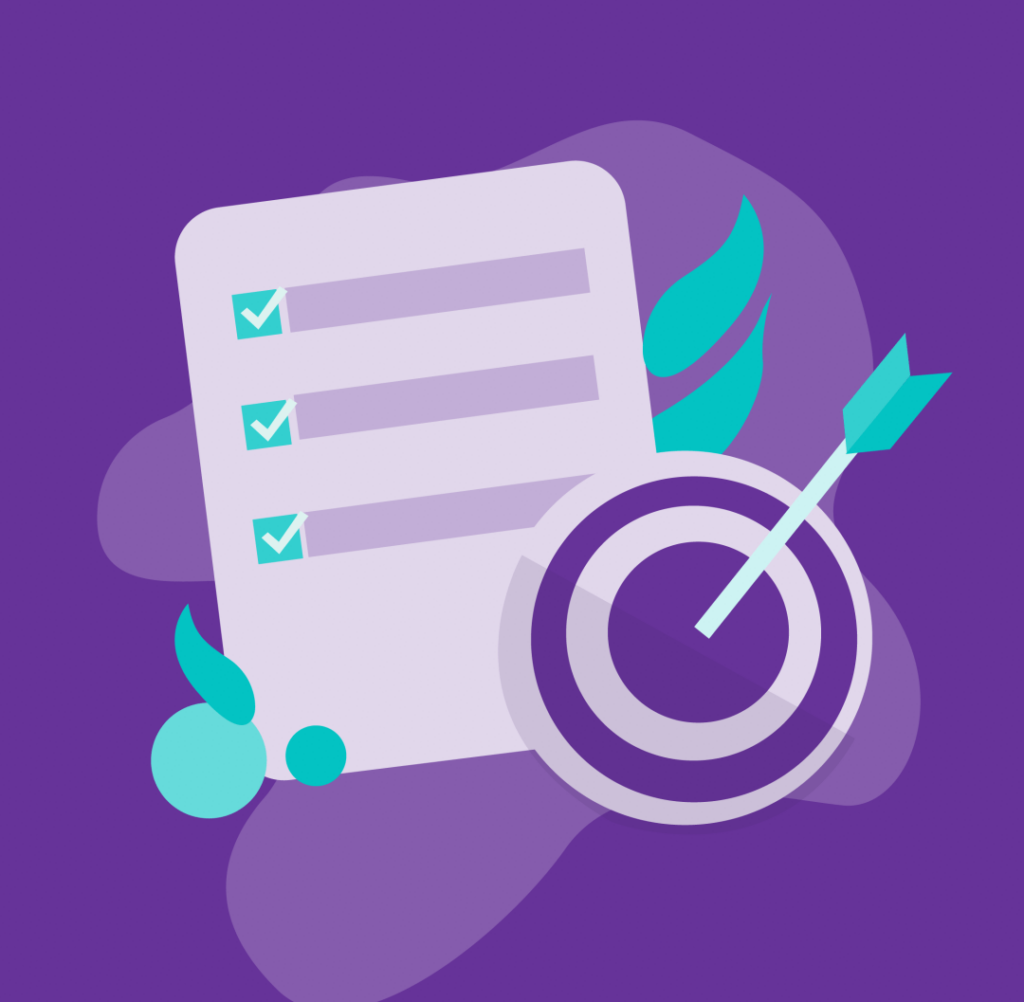Flying by the seat of your pants just doesn’t cut it anymore when it comes to marketing a small or medium-sized business. If you don’t have an integrated content strategy, your digital marketing in particular will inevitably be all over the place and a more organised competitor will steal your customers — and they’ll probably spend less doing it too. Here’s why you need an integrated content strategy.
Topics covered
What is an integrated content strategy?
In order to understand why you need a content strategy, you first need to know what one is. A content strategy is a framework that guides the creation of meaningful and engaging content that accomplishes specific goals for your business. An integrated content strategy also includes a plan for how you will deliver your content.
All of these aspects of a content strategy are crucial for every business, from sole traders like authors and painters, to large corporations. Because, if your content doesn’t accomplish your business goals, it’s pointless. If it’s not engaging and meaningful people won’t consume and share it. If you don’t have a plan for disseminating your content, you won’t get it in front of the right people at the right time.
But that’s just scraping the surface of why you should have an integrated content strategy.
9 Reasons all businesses should have an integrated content strategy
1. An integrated content strategy ensures your entire team knows your goals

Why does your business create (or invest in) content?
Do you know? Does every core member of your team know? If you have dedicated marketing staff, do they all know?
If the answer is yes, that’s fantastic.
If you know what your goals are but your other key players don’t, you need a document (your strategy) that spells it out. If no one knows what your goals are, you need to sit down and figure out what they are. ‘To make money’ isn’t good enough. If you don’t have SMART goals, how do your content creators know what they’re meant to deliver, and how will you know when your content is effective and when it needs more work?
You’ll be best served by having goals for each stage of your sales funnel. By extension, you should also have content that caters to each stage of the funnel.
Remember there are two key actors you need to serve when creating content.
On the one hand your content must suit your customers. On the other, it also needs to suit search engines, so people can find you and your content.
You shouldn’t have to rely on expensive paid advertising for customers to find you. Nor should your customers be deterred by robotic content.
You’ll need to have goals that cater to both masters.
2. An integrated content strategy gives you the tools to understand whether you’re succeeding

So, you know what you’re goals are. How do you know whether you’re achieving those goals? How do your content creators know?
If you don’t know how to measure your success, you’ll never know what content is working and what isn’t. And if your content creators don’t know which of their deliverables are successful, they’ll be very lucky if they consistently churn out effective content.
You need specific measures of success (metrics) and a means of determining what those measures mean (analysis). I good integrated content strategy will clearly define your measures of success.
3. An integrated content strategy will tell you what content to produce to enable you to meet your goals

Once you know what your goals are and how you’ll know whether you’re achieving them, you can focus on preparing content that aims to address each of your goals and then determine whether that content is successful. When you sit down in six months time to produce that month’s (or week’s, or day’s) blog post/video/infographic though, will you remember everything you’ve already produced and how you were aiming to achieve your goals with each piece?
How much time will you waste going back through your content catalogue to refresh your memory? How much time and money will you waste producing (or purchasing) content with a duplicate or redundant purpose?
No one wants to waste time or money, so a good content strategy will spell out what content you need and when you need it. It’ll also be flexible enough that you can make changes based on real-time data about what works (or doesn’t work). For example, you could specify that you need a blog post on topic x and that it should be one of three types of blog posts. Then, when the time comes to create that post, you can choose the blog post style that’s performing best with your audience at that time.
Here’s an overview of the best-performing blog post styles, which you might like to include in your integrated content strategy.
4. An integrated content strategy will list the best platforms for your business and the specific kinds of content you create

Why did you choose each of the social media platforms you’re currently using? Why did you choose to also use (or not) offline distribution platforms? Why did you choose to sell your book exclusively on Amazon? Are your chosen platforms the best options for your specific goals? In 6 months time, will you remember how you’re meant to differentiate your Facebook posts from your Twitter posts?
Content marketing may be better value for money than other forms of marketing, but it still requires a reasonable investment of time and/or money, so you don’t want to waste it on less-than-ideal platforms. Developing an integrated content strategy will give you a record of how you made the decision to use each platform and it will tell all your creators which kind of content they should be creating for each platform. And if something in your marketing or industry landscape changes, you’ll have the information you need to quickly adjust your approach, if required.
5. An integrated content strategy will help ensure every piece of your content can be tailored for the right part of your audience

This goes hand in hand with the above point. I’m sure I don’t need to tell you how important it is to know who your ideal customers are. But you also need to know the best way to reach each segment of your audience. And a good integrated content marketing strategy will lay out your audience personas, the platforms you can best use to reach them, and the way to create content for each persona.
If you don’t know all that, your messages won’t be nearly as effective.
Knowing your target audiences and their habits also enables you to schedule messages to be delivered when your targets are most likely to see them and when they’re likely to be most receptive to your messages.
You also need to know what your audience is using each of your platforms for.
Maybe they research your products on your website, use Facebook Messenger to ask questions about your products, buy your products in-store, and head to YouTube when they want to know how best to use them. On the other hand, maybe they want to get everything they need on their phone — from a mobile-optimised website with a secure mobile-friendly online checkout to SMS reminders about when to order refills.
Your strategy can document this kind of information, so you can tailor your use of each platform to provide the services your prospects and customers actually want.
6. An integrated content strategy will tell you how to target your messages

Do you know which hashtags to use to get your posts into relevant social media conversations? Do you know which influencers to tag in posts to boost engagement and dissemination of your messages? Do you know which celebrities to get onside, so they spread your message for you through offline media?
This is another very useful inclusion in an integrated content strategy. The key here is to document the research you did to find the relevant hashtags/influencers/celebrities, so you can quickly update your data as the situation changes.
And beyond social media, do you know how best to segment your email list? Do you know how to gather the information you need to decide which subscribers should go into each segment? Documenting this decision-making process in your integrated content strategy is a great way of ensuring you always have that background information when you need to make new decisions or onboard new staff.
7. An integrated content strategy will tell you when to share your messages

At what point are your prospects ready for sales information? Push too early and they’ll be turned off your brand. But if you act too late, they’ll buy from a competitor.
And when are your leads most receptive to your messages? Do they check their social feed while waiting to pick their kids up from school? Do they check their email every morning at 6 am before they head to the gym? If you’re sending your messages at the wrong time, they may get buried among all they other content your audience is being bombarded with.
Knowing the best time to push out specific information is a key part of an integrated content strategy.
8. An integrated content strategy will tell your entire team who is creating and distributing content

It always pays to have responsibilities down in writing, so there can be no confusion. Content creation and dissemination responsibilities are no different.
Make sure everyone in your team knows what their responsibilities are and what resources are being devoted to content by detailing it in your strategy.
Related to this, does everyone in your team know what tools they’re using to create content and how they’re going to store content so anyone in the team can access the creative in their absence? People often get sick or injured at the most inconvenient moments. And I know from experience how challenging it can be if an asset is needed when a team member is unavailable and no one can access it. Trust me, it’s not fun. So save yourself the pain and make sure everyone knows where to save content and how to access works in progress if the content owner is away, and put that information in your content strategy, so it can’t be forgotten and so all new staff can get up to speed on those processes during their onboarding.
9. An integrated content strategy will remind you when to revise your content

A key part of any strategy has always got to be a decision about when it will be updated and revised if needed. Digital marketing, in particular, is so fast moving that this shouldn’t usually be a specific time. Rather, it should document indicators that tell you it’s time to do an update. However, it’s also a good idea to build in default or minimum review periods, so nothing gets overlooked. Many businesses will get the best results if they update evergreen content yearly. You’ll find this especially important if you’re relying heavily on search traffic, as search engines prefer fresh content. However, some businesses will need to make updates more regularly than that.
Next steps
Once you’ve developed your content strategy you need to produce implementation plans. These will include a stocktake of existing pieces of content, lists of content pieces that need to be created and calendars for dissemination. To get you started, download a free content gap analysis template to help you conduct your content stocktake. It’ll save you time and also contains suggestions for various kinds of content you could use for each stage of a typical sales funnel.
If you have any trouble developing your strategy, consider consulting an expert. A strategist can take an outside view of your business and see your strengths and weaknesses, which, in addition to expert knowledge about how to construct the most effective strategies, can really help you take a step back and develop an actionable integrated content strategy that suits your business’s goals and the time and expertise you have available for content marketing activities. If you would like to benefit from the knowledge and expertise of an experienced content strategist, we offer several integrated content strategy services that cover most needs, or I can put together a bespoke package that’s completely tailored to your business.
Once you’ve got your content strategy and implementation plan, you’ll be ready to start creating (or commissioning) content. Now is also a great time to ensure your site and content is optimised so it ranks well in search engines (so you get more website visitors). Here’s a super detailed guide that will tell you exactly which SEO techniques will make the biggest impact on your search rankings based on how well optimised your site currently is.
